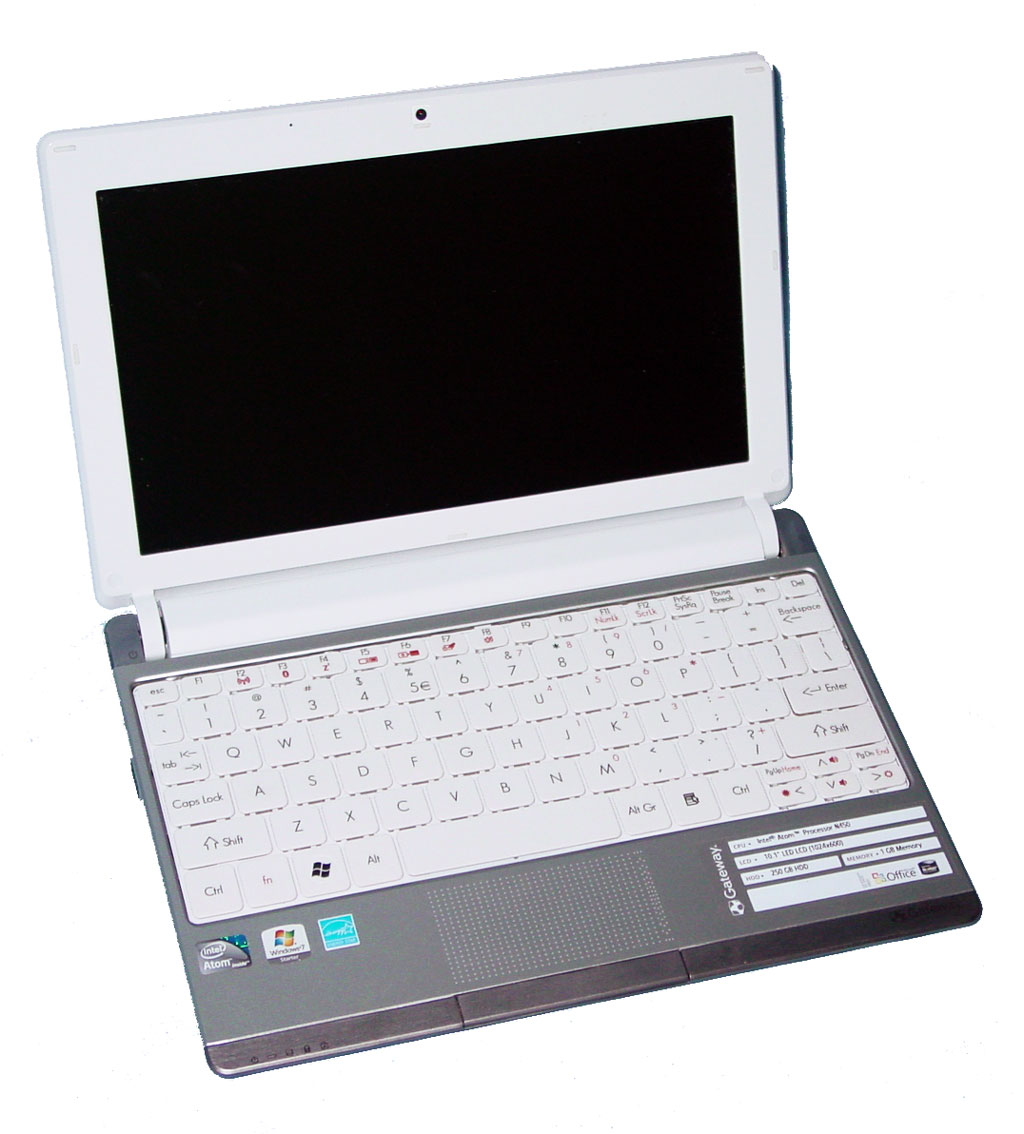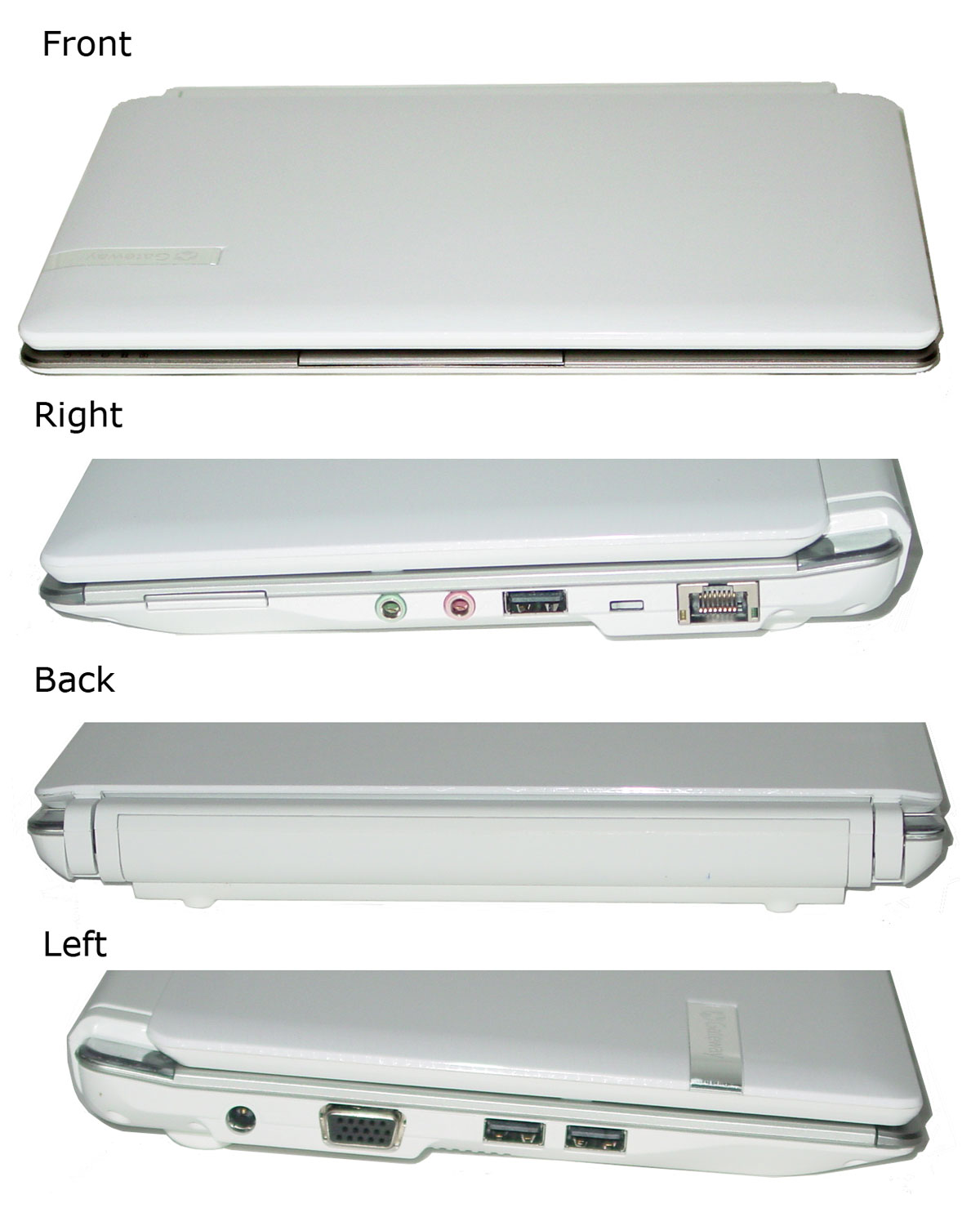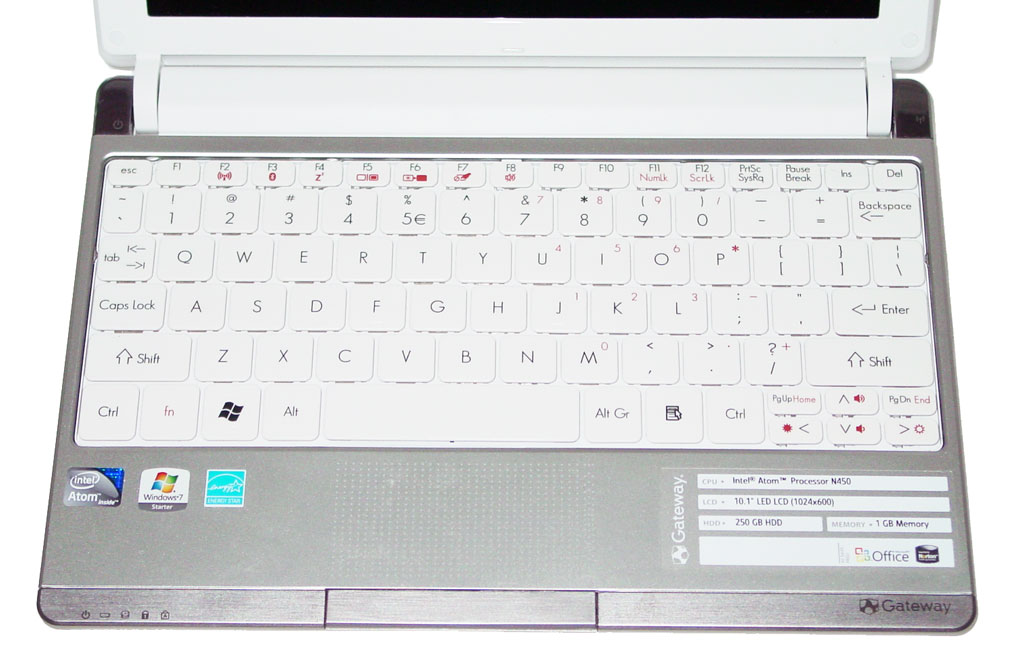Tom's Definitive 10.1" Netbook Buyer's Guide: Fall 2010
Gateway LT2120u
While Acer and Asus have multiple Pineview-based netbook models floating around, Gateway has two: the LT21 and LT23 series. There is basically no difference between them, other than maybe color options. In fact, it seems that they even share the same motherboard, but it is important to point out that neither is using DDR3 Pineview-based Atom processors. We have been told by Gateway that the LT21 will be in stores at least until the end of the year. So, since it shares the same specs with the LT23 series, find out which one is cheapest if you are weighing your 10.1” Gateway netbook options.
The entire LT21 series starts at $299.99 and differs very little except for the following:
- 802.11n support
- 160 GB vs 250 GB
- three color schemes: Red/Black, White/Silver, and Black/Black
- Windows 7 Starter vs. Windows XP Home
- 5600 mAH or 5800 mAH 6-cell battery
The Gateway LT2120u feels a bit beefy, even though it has a similar weight profile to the rest in the roundup. We say beefy mostly because of the prodigious use of ABS plastic where we don’t expect it. The Asus 1001P is all ABS, and this also goes for the LT21 series. However, once you open up the system, you find that the high-gloss display bezel is almost twice as thick as what you find on other systems. This makes for a very sturdy display, but it also means that the LCD screen is a further recessed.
There are other surprises here. The power and “pseudo” wireless buttons are integrated into the hinge as "peddles." It is a bit deceptive, but the wireless button isn’t a button at all. It is simply an LED. Honestly, this seems like a missed opportunity. Gateway should have made this a WiFi button for symmetry. At the moment, the wireless enable/disable functionality is provided via Fn+F2.
The excellent layout design that Gateway implements here shows up in the large touchpad real estate. I just wish there was some more tactile feedback in the power button; otherwise, overall it is an excellent layout.
You’ll find basically the same 93% keyboard on the LT21 series as you do on many of the Aspire One netbooks. It has good tactile feedback and key size, but this isn’t what we are going to rave about. Instead, the real winner here is the integrated touchpad. This looks similar to the touchpad on the Asus 1005PE, which we have yet to try, so its hard to compare. On its own merits, this is the best touchpad of the six netbooks we have in the lab and netbooks we have used in the past.
In what feels like either ABS or a possibly a polycarbonate/ABS composite, the upper casing of the LT21 feels unpolished to the touch. The simple dots on the case mark off where the touchpad starts and ends. The dots seem to be almost painted on. They are most definitely not dimples, but we aren’t quite sure if this part of the fabrication process or if they are added on later. Honestly, the texture of the dots is as perfect as you can get. There is enough texture to get feedback and contrast with the rest of the case, but it in no way feels distracting or unnatural.
There is a separate scroll bar, which feels more intuitive than the use of this touchpad’s multi-gesture functionality. However, this area does not pull double-duty as touchpad navigation. What makes the touchpad even better is the use of a well-designed button. The rocker-style button is made of what seems to be polycarbonate in the guise and texture of brushed aluminum. This long button sits slightly beveled against the front edge of the notebook, but there is excellent feedback and depression space. The fact that Gateway chose to make this a longer bar helps avoid the middle-click confusion. In fact, you can’t actually make a middle click. The button is designed so that you need to be at least 45% to either side to perform a click operation.
Current page: Gateway LT2120u
Prev Page Dell Inspiron Mini 10 (1012 - HD Display) Next Page HP Mini 210 HDGet Tom's Hardware's best news and in-depth reviews, straight to your inbox.
-
frederico Very indepth excellent review. Pleasantly surprised. A lot of people out there have little clue of netbooks or even their uses. I got a little samsung last year and now I use it more than my main PC, obviously not for gaming, but watching webcasts/films at night, listening to music, grabbing it while watching TV to check something on the web, etc, etc. Not to mention completely essential when travelling on train/bus/wherever - 6 hours batt life still holding up.Reply
Very handy little things - easy to become addicted to. Theres some new models coming out this month that can handle HD but still have great batt life, will be tempted to pick one up.
-
ScoobyJooby-Jew I have used a Gateway netbook with vista and 2 gigs of ram. I loved it. The 2 gigs really helped smooth things out. And when I loaded the netbook distro of ubuntu, it was ridiculously awesome. It satisfied everything except gaming. Which is what I wanted it to do.Reply -
Luscious That's the best performance rundown I've seen to date on the Broadcom Crystal HD - nice to get critical, hands-on info without the marketing BS. That said, AMD's Nile platform is seriously spanking Intel.Reply
I recently tested the HP Pavilion dm1z with the dual-core K625. Only slightly heavier/bigger than the 10" HP 210 Mini, but far superior when it comes to performance:
http://lgponthemove.blogspot.com/2010/09/first-impressions-hp-dm1z-notebook.html -
lashabane Huh, never knew that a full propane tank weighs ~38 lbs.Reply
*Ninja edit*
Super good roundup/review. I'm in the market for a netbook this season and this review helped a lot. -
braneman I actually found that on my last netbook (toshiba satalite, amd based) with a ram upgrade the only game it couldn't play passably on lowest settings(resolution included) was red faction guerrilla, even then it was graphical errors, you could even bring Crysis up to MEDIUM on some settings. meh now I got an m11x, it's very nice.Reply -
KingArcher OMG this review is like drugs for the technically inclined.Reply
Good....no, Excellent job Andrew Ku. Amazing stuff. Really learned something new.
I look forward to reading more reviews from you. :bounce:
P.S. Editors, give this man a raise ;) -
super_tycoon If you're doing a 12 inch in the near future, I hope you include the Asus 1215n. I've had mine for three weeks and it's brilliant. ION2 and Optimus are easily worth whatever I paid for them. Playing any HD youtube video yields unicorns and butterflies while my friend's gateway (the one reviewed here) only gets the look of disapproval.Reply
My concern is that drivers for ION2 are a bit -fast- slow and loose now, the stock asus drivers were crap, the Nvidia update at launch was crap, but about two weeks ago there was a major update that requires manual installation. It gets roughly double, yes double, the fps of the old pos. Now I didn't write the thing, but it felt like it addressed the PCI-Ex1 link narrowness. (After all, what else could it be? It's just a 210m at it's core, but whatever's drawn on the Nvidia gpu also has to go back down the PCI-E link to be written to the Intel gpu vram (Optimus))
Anyhow, forget the broadcom thing, my friend (a different one, I promise they're real and actually have these things!) has the dell and it's pretty bad. Even I couldn't get that stupid thing to work reliably except for WMP. At least he got his with his new xps 16.
TL;DR I've actually used the gateway and dell netbooks reviewed here and they're both crappy. The gateway gets good battery life though and feels nicer. I love the asus 1215n with it's ION2 gpu and Optimus, and you should too.


